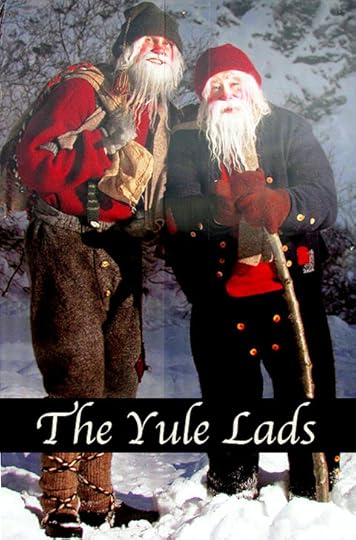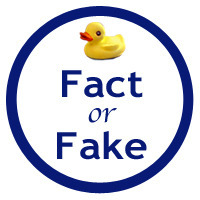Bathroom Readers' Institute's Blog, page 154
December 11, 2013
Who Cut the Cheese?
Would you eat cheese made out of bacteria from the human body?
 Scent researcher Christina Agapakis, and Sissel Tolaas, a synthetic biologist, learned that microscopic ecosystems inside the human body are often very similar to the bacteria that makes cheese possible. So, with the cooperation of Stanford University and the University of Edinburgh, they followed this information to its natural conclusion: a product called Selfmade, which is “human cheese.”
Scent researcher Christina Agapakis, and Sissel Tolaas, a synthetic biologist, learned that microscopic ecosystems inside the human body are often very similar to the bacteria that makes cheese possible. So, with the cooperation of Stanford University and the University of Edinburgh, they followed this information to its natural conclusion: a product called Selfmade, which is “human cheese.”
Agapakis and Tolass first asked eight people, including noted food writer Michael Pollan, to use swabs to collect bacteria samples from various body parts, including their armpits, noses, and toes. (Pollan used his belly button.) Then, using traditional cheesemaking methods, with the human-based bacteria as the active ingredient, the researchers whipped up eleven different types of cheese.
The cheeses they created don’t look—or smell—much different than what you’d find at your supermarket. The cheese made out of Pollan’s belly button goo, for example, doesn’t taste like Pollan’s belly button goo—it tastes like, well, cheese. These icky invention(s) were later put on display at Grow Your Own…Life After Nature, an exhibition at the Science Gallery in Dublin, Ireland.
As far as we know, Agapakis and Tolaas haven’t handed out any free samples. Nevertheless, Uncle John would rather put good old fashioned cheddar in his grilled cheese sandwiches, thank you very much.
Weird Celebrity Facts You’ve Probably Never Heard
 Rupert Grint. Grint played Ron Weasley, Harry Potter’s best friend, in eight Harry Potter movies. One of the first things he bought when he started earning movie-star money: a 1974 Mr. Whippy van—an ice cream truck. He’d wanted to be an ice cream man, before he discovered acting. “I keep my van well stocked. It’s got a proper machine that dispenses Mr. Whippy ice cream,” he told The Daily Mail. He’d have to have a license to sell ice cream, so instead, he drives around England and hands out free ice cream bars to kids.
Rupert Grint. Grint played Ron Weasley, Harry Potter’s best friend, in eight Harry Potter movies. One of the first things he bought when he started earning movie-star money: a 1974 Mr. Whippy van—an ice cream truck. He’d wanted to be an ice cream man, before he discovered acting. “I keep my van well stocked. It’s got a proper machine that dispenses Mr. Whippy ice cream,” he told The Daily Mail. He’d have to have a license to sell ice cream, so instead, he drives around England and hands out free ice cream bars to kids.
Bruce Willis. During the shooting of Die Hard, director John McTiernan wanted the movie to look—and sound—as realistic as possible. He couldn’t use real bullets for the movie’s shootout scenes, of course, so he used extra-loud blanks, which better approximate the sound of real bullets. In the scene where Willis’s character shoots a terrorist through the bottom of a table, the gun was so close to Willis’s ear that he suffered permanent hearing damage.
Donal Logue. Logue is a character actor who pops up in a lot of movies and TV shows, and he’s starred on Grounded for Life and Terriers. In his spare time, he drives 18-wheeler trucks for fun. He parlayed that hobby into a business—he owns Aisling Trucking, a shipping and trucking company.
The cast of HBO’s Girls. The four main female cast members all have famous parents. Allison Williams (Marnie) is the daughter of NBC Nightly News anchor Brian Williams; Jemima Kirke (Jessa) is the daughter of Bad Company drummer Simon Kirke; Zosia Mamet (Shoshanna) is the daughter of playwright and screenwriter; Girls creator and star Lena Dunham (Hannah) is the daughter of acclaimed avant garde photographer Laurie Simmons.
Tom Hanks and Daniel Day-Lewis. Both are acclaimed film actors who have won multiple Oscars for Best Actor—Hanks for Philadelphia and Forrest Gump, Day-Lewis for My Left Foot, There Will Be Blood, and Lincoln. That’s not all they have in common. Both have adult sons who are trying to start a career in rap music. While a student at Northwestern, Chester Hanks—who bills himself as “Chet Haze”—recorded “White and Purple,” a Northwestern-themed takeoff on Wiz Khalifa’s hit “Black and Yellow.”
Gabe Day (his full name is Gabriel-Kane Day-Lewis) is an 18-year-old freshman at Sarah Lawrence University. In November he released a video for “Green Auras,” which the New York Post called the “worst rap video ever.” It’s since been removed from YouTube.
December 10, 2013
Weird Invention: The Stores Have Eyes
A trip to the supermarket is stressful enough, and that’s not even counting the body-scanning cameras checking you out while you try to pick out a toilet brush.
Tesco, a chain of grocery and gas station/convenience stores in the U.K., wants to make sure that you’re receiving full access to all of the products you might want to purchase. How? By using body-scanning cameras to scan customers, and then bombard them with customized advertisements. The system is being tested at all 450 Tesco convenience stores, and if successful, it will be installed in the company’s supermarkets.
Here’s how it works: While a customer stands at the pumps, filling their gas tank, a hidden camera scans them to determine their age, sex, and physical features. Then a monitor plays a 10-second advertisement on a 100-second loop. If you’re male and around 20, for example, you might get an ad for Axe Body Spray or Doritos. If it’s late and the camera’s computer system decides you look tired, you’ll get an ad for coffee or Red Bull. Then, presumably, you’ll head inside and buy the recommended products.
 Tesco isn’t the only company experimenting with this kind of technology. In 2012, an Italian company called Almax rolled out the EyeSee, a mannequin with cameras hidden in its eyes. It’s also outfitted with a hidden computer that can record audio and analyze shoppers’ faces so it can track comments and movements. Almax says the EyeSee will help department stores serve their customers better by learning more about their shopping habits. Watch what you say and do: the $5,130 mannequins are already popping up in stores across Europe and the United States.
Tesco isn’t the only company experimenting with this kind of technology. In 2012, an Italian company called Almax rolled out the EyeSee, a mannequin with cameras hidden in its eyes. It’s also outfitted with a hidden computer that can record audio and analyze shoppers’ faces so it can track comments and movements. Almax says the EyeSee will help department stores serve their customers better by learning more about their shopping habits. Watch what you say and do: the $5,130 mannequins are already popping up in stores across Europe and the United States.
Want more weird inventions? Check out Uncle John’s Bathroom Reader Weird Inventions.
How Some Popular Websites Got Their Names
“BathroomReader.com” got its name from the Bathroom Reader book series. Now you know!”
Bing. In development, Microsoft’s search engine was codenamed “Kumo,” But Microsoft went with Bing because focus groups said it reminded them of “the moment of discovery.” The company also liked that it was short, easy to spell, and transferable to languages other than English. (Detractors jokingly claim BING is an acronym for “but it’s not Google.”)
Yelp. The business listings and ratings site is in many ways an Internet version of the Yellow Pages. In fact the “yel” in “Yelp” comes from “yellow,” and the “p” comes from “pages.”
Twitter. It’s a “microblogging site,” which means users’ posts cannot exceed 140 characters. Those short messages reminded company founders of birds chirping, or “twittering.” After almost naming the site twttr, creator Jack Dorsey went with “Twitter,” which individual posts known as “tweets.” Twitter’s logo? A bird.
Wikipedia. “Wiki” is Hawaiian for “quick,” and “pedia” comes form “encyclopedia.” Result: a quick encyclopedia.
The Onion. The satirical newspaper recently announced it was ceasing a print version, which had been published since 1988, so it’s an all-online endeavor now. It began as a college newspaper, and founders Tim Keck and Chris Johnson had so little money they ate onion sandwiches. While planning the paper, Keck’s uncle saw the duo eating onion sandwiches and reportedly quipped, “You should call the newspaper The Onion.”
Skype. The video-phone-via-Internet service got its name from a shortening of the phrase “sky peer-to-peer,” as users connect person-to-person via all those communication waves floating around out there.
Etsy. Rob Kalin, founder of the marketplace where users buy and sell vintage and handmade goods, wanted a nonsense word. But as he was watching the Italian film 8 1/2, he noticed characters said “etsi,” a lot, which means “oh, yes.”
Pinterest. The name is a combination of “pin” and “interest,” which reflects how the site functions—it’s a social network where users share pictures of things they find interesting by “pinning” them up on their home page, or pin board.
December 9, 2013
Meet the Yule Lads!
Otherwise known as Iceland’s bizarre mythical gift givers.
 Many countries have their own version of Santa Claus. We recently delved into the unusual traditions surrounding Sinterklaas, the gift giver that sails into the Netherlands every year on a steam ship with bumbling helpers in blackface. Even as weird as that tradition may seem to outsiders, Iceland’s might be even stranger.
Many countries have their own version of Santa Claus. We recently delved into the unusual traditions surrounding Sinterklaas, the gift giver that sails into the Netherlands every year on a steam ship with bumbling helpers in blackface. Even as weird as that tradition may seem to outsiders, Iceland’s might be even stranger.
Around those parts, Santa Claus isn’t a single guy. Instead, he’s represented by 13 magical monsters called the Jólasveinarnir, literally the “Yule Lads.” Much like the dwarfs in Snow White and the Seven Dwarfs, each is named for their personality, all of which reflect an ill-mannered quirk they indulge in when not delivering gifts.
Each Yule Lad is said to arrive in Iceland on a different day during the Christmas season, and each then leaves, one by one, from Christmas until Epiphany.
A rundown of those mischievous Yule Lads:
• Sheep-Cote Clod (arrives on Dec. 12, leaves on Dec. 25) tries to steel sheep, but is rarely successful because of his peg-legs.
• Gully Gawk (Dec. 13 to Dec. 26) hides out in ditches, then sneaks onto farms and steals milk.
• Stubby (Dec. 14 to Dec. 27) is a short little guy who steals pie pans and eats any leftover crust.
• Spoon-Licker (Dec. 15 to Dec. 28) steals and licks wooden spoons.
• Pot-Scraper (Dec. 16 to Dec. 29) steals leftovers right out of the pot.
• Bowl-Licker (Dec. 17 to Dec. 30) hides under beds and steals bowls.
• Door-Slammer (Dec. 18 to Dec. 31) slams doors, but only at night.
• Skyr-Gobbler (Dec. 19 to Jan. 1) will eat up all of your skyr, which is a thick, sweetened Icelandic yogurt.
• Sausage-Swiper (Dec. 20 to Jan. 2) hides in the rafters and steal sausages while they’re being smoked.
• Window-Peeper (Dec. 21 to Jan. 3) looks through your windows for things he can steal.
• Doorway-Sniffer (Dec. 22 to Jan. 4) uses his gigantic nose and subsequent excellent smelling power to locate and steal laufabrauo, an Icelandic Christmas bread.
• Meat-Hook (Dec. 23 to Jan. 5) uses his hook to steal meat.
• Candle-Stealer (Dec. 24 to Jan. 6) steals candles from children and eats them (the candles, that is).
And in addition to their signature move, legend says the Yule Lads like to eat children, too, especially naughty ones. Every December, the Yule Lads leave their home in the mountains of northern Iceland in search of kids to eat. Rarely do they find any, so instead they just ransack the homes of Iceland’s naughty children, but leave gifts behind for the well-behaved ones.
If this wasn’t weird enough, the Yule Lads typically travel with a large, monstrous feline called Jólakötturinn, or “the Yule Cat.” It also eats kids, but, according to folklore, only those who don’t receive new clothing for Christmas (which is probably why Icelandic kids traditionally gets gifted clothes…and then don’t complain about it.)
Survey Time!
Dear loyal fans: We want to hear from you! We are constantly trying to improve the content we bring you on the Uncle John’s Bathroom Reader website, and your input would be greatly appreciated. Thank you in advance for taking the time to fill out the survey below. Survey will close on December 15, 2013. As always, go with the flow!
Create your free online surveys with SurveyMonkey , the world’s leading questionnaire tool.
December 6, 2013
A Real Life Saver
The origin of a favorite stocking stuffer that was mostly accidental.
 In the early 20th century, Clarence Crane ran a candy company in the Cleveland, Ohio, area. His top sellers were chocolate candies, but sales always plummeted during the summer months. Why? Chocolate melts. And in the 1910s, air conditioned stores were not the norm. Then Crane got an idea. Inspired by the hard mints popular in Europe and just beginning to be imported into the U.S., Crane created his “summer candy”—hard peppermint candies that were round and flat, to differentiate from the spherical European ones.
In the early 20th century, Clarence Crane ran a candy company in the Cleveland, Ohio, area. His top sellers were chocolate candies, but sales always plummeted during the summer months. Why? Chocolate melts. And in the 1910s, air conditioned stores were not the norm. Then Crane got an idea. Inspired by the hard mints popular in Europe and just beginning to be imported into the U.S., Crane created his “summer candy”—hard peppermint candies that were round and flat, to differentiate from the spherical European ones.
Crane hired a pill manufacturer to make and package his mints, but there was a big problem: the pill machine kept poking a hole in the middle of the mints. The pill maker was apologetic, but Crane didn’t mind. He thought that the round, flat mints with a hole in the middle made them look even more different than the European candies he was basing the candies on. Even more than that, Crane thought they looked like life preservers…also known as lifesavers. And so that’s what Crane called his new line: Life Savers. Crane took the nautical theme to the logical conclusion in the marketing for Life Savers, launching an ad campaign urging customers to fight “that stormy breath” with Pep-O-Mint flavored Life Savers.
But in spite of all of that, Life Savers were a flop. That’s because they tasted terrible. Crane sold them packaged in cardboard tubes, which made the candy dry out, and sap their flavor. Facing financial ruin, in 1913 Crane sold the idea of Life Savers to a New York businessman named Edward Noble for $2,900 (that’s about $66,000 in today’s money). Noble’s first move: he started selling the candies in flavor-saving tinfoil. The candy was an immediate hit, and really took off when the five-flavored-fruit roll was introduced in 1935. More than a billion rolls have sold since.
It’s Fact-or-Fake Friday!
 It’s Friday, so that means it’s time for your weekly fake-out. Here’s how it works: Two of the three following stories are true. And one of them we made up. Can you guess which one is the fake? Pick your answer at the end of the article and see if you’re right.
It’s Friday, so that means it’s time for your weekly fake-out. Here’s how it works: Two of the three following stories are true. And one of them we made up. Can you guess which one is the fake? Pick your answer at the end of the article and see if you’re right.
A.
By any chance are you missing an Emmy Award? If so, you’ll want to get in contact with Ismael Cekic, of Brooklyn. Ismael found the statuette in the garbage outside his home, and although he didn’t recognize the figure at the time, he liked the look of it enough to dust it off and take it home. A few weeks later, only when Cekic was watching the Emmys on TV, had he realized what he had found in the trash. “Next thing you know I’m watching the Emmys and they show an Emmy award and I’m looking at my coffee table. I’m doing back takes. What the hell?” The golden trophy is believed to date to the 1950s, but the band what identifies the recipient is missing. Ismael is now on the hunt for the original owner’s family. “I would want this back in my family if I would have lost it. So, I’m thinking why would someone throw this out?”
B.
The color scheme—mint and peach—was one thing. The ivory dress with the cap sleeves, that was a little uncanny. The floral arrangements—ranunculus and peonies, not exactly common—were a little bit too much. But when Sara-Beth Coen, a 27-year-old interior designer from Highland Park, Illinois, realized that an acquaintance had even hired the same band that had played her 2010 wedding, she decided things had gone too far. She decided to press charges. She first filed a report with the Lake County Sherriff’s Department, seeking charges of theft, and when she got no traction there, she followed up with the office of Michael Nerheim, State’s Attorney for the county. She still hasn’t gotten any legal office to pay attention to her “intellectual property” lawsuit.
C.
A recent Yemeni wedding ended in tragedy, with two dead and two injured as a celebrant fired his AK-47 into the air as guests danced to Psy’s overplayed hit song “Gangnam Style.” A video from the event that’s been circulating on the web shows a man shooting the gun into the air in the southern Yemeni city of Taiz, and then starting to dance with other guests. Gunfire is heard, and when the camera moves down, several bloody bodies are seen on the ground. The music then stops as guests move in to help the victims.
Want more fakes? Check out Uncle John’s Fake Facts. (Really!)
December 5, 2013
Weird Holiday: The Trouble With Sinterklaas
Sinterklaas is one of the world’s most controversial holidays
but you’ve probably never heard of it.
 One of the ways that Santa Claus is able to travel all around the world on Christmas Eve is by cutting corners. For instance, he doesn’t widely visit homes in Europe’s “low countries.” Instead, a much skinnier gift-giver covers those regions. His name is Sinterklaas (or just “Sint”). He delivers presents on December 5, on a holiday also called Sinterklaas, to all the good boys and girls…who live in Belgium and the Netherlands.
One of the ways that Santa Claus is able to travel all around the world on Christmas Eve is by cutting corners. For instance, he doesn’t widely visit homes in Europe’s “low countries.” Instead, a much skinnier gift-giver covers those regions. His name is Sinterklaas (or just “Sint”). He delivers presents on December 5, on a holiday also called Sinterklaas, to all the good boys and girls…who live in Belgium and the Netherlands.
Instead of a flying sleigh pulled by reindeer, Sint rides a white horse to make his toy deliveries. And instead of spending the offseason at the North Pole, Sint is said to live in Spain. And instead of arriving on a float at Macy’s Thanksgiving Day Parade to herald the beginning of the Christmas season, Sint departs Spain on a steamship and shows up at various celebrations in the middle of November. And no milk and cookies for Sint, please—Belgian and Dutch kids leave Sint’s horse a carrot in their shoes.
There’s one more big difference between Santa and Sint, and it’s the weirdest one. Santa has elves, but Sint is said to rely on the aide of several bumbling servants, all named Zwarte Piet, or “Black Pete.” They’re the ones who slide up and down chimneys delivering presents, while Sint supervises.
At festivals, the Piets wear uniforms that make them look like 17th century servants, and the actors who portray them wear earrings, large, curly wigs, bright red lipstick…and cover their skin in blackface makeup.
While this custom is considered normal and inoffensive in Belgium and the Netherlands, expats and tourists are typically shocked when they encounter a Piet in blackface. In recent years, many people, especially in the Netherlands, have begun protesting the Piets and their negative racial implications. In response, more than two million Dutch have “liked” a pro-Piet Facebook page. Piet defenders argue that they aren’t racist caricatures and that the tradition is part of a beloved holiday geared towards kids. Others say that Sint’s helpers aren’t black—that they get their dark skin from all the soot they encounter scooting through chimneys each December 5th.
Here’s humorist David Sedaris’s take on the Zwarte Piets.
Ford Mustang: Car of the ’60s
With the international reveal of the sixth generation Mustang on its 50th anniversary, we revisit this iconic car’s history. The original Ford Mustang, a sporty car for “everyman” introduced in 1964, is now a symbol of the entire decade. Here’s a bit of its history.
 The Mustang was the most successful new car ever introduced by the American auto industry. But in terms of the ’60s, it was more than a car. Its popularity was an expression of the simple truth of the decade—that everyone wanted to look, feel, and act young.
The Mustang was the most successful new car ever introduced by the American auto industry. But in terms of the ’60s, it was more than a car. Its popularity was an expression of the simple truth of the decade—that everyone wanted to look, feel, and act young.
ORIGIN OF THE CAR
• The Mustang was the pet project of Ford General Manager Lee Iacocca who kept notes on new car ideas in a little black book. Because Ford kept getting letters from car buffs who wanted a car like the 1955 T-Bird, Iacocca felt there was a market for a new “personal sports car” waiting to be developed. Research also showed that the population was getting younger and that young people bought more cars per capita than any other segment of the population.
• Based on these findings—and Iacocca’s instinct—Ford decided to create a car that was sporty yet low-priced, so young people and middle-income groups could afford it. But it also had to be capable of taking enough options to make it a luxury car.
• The new project was dubbed “T-5.” Ford engineers and designers worked under maximum security in a windowless room, known as “The Tomb”; even the wastepaper had to be burned under supervision.
• Over a three-year period they came up with many two-seat prototypes— XT-Bird, Median, Mina, Allegro, Aventura, and Mustang I (loved by car enthusiasts but considered too sporty by Iacocca)— but all were scrapped in favor of a four-seat model with a large trunk. It was completed in spring 1963.
• The Mustang was designed to be versatile. The buyer had options: two different engines, air conditioning, whitewalls, power disc brakes, racing hubcaps, sports console, and so on. As Dr. Seymour Marshak, Ford’s market research manager, said admiringly, “This flexibility makes this car the greatest thing since the Erector set.”
• Since Ford figured the T-5’s market was the young sports car buyer, the name “Torino” was chosen because it sounded like an Italian sports car. The projected ad campaign called it “the new import.. .from Detroit.”
• But last-minute market research showed that the car could appeal to all buyers, so a new name had to be chosen. Colt, Bronco, and Maverick (all used for later cars) were considered. But “Mustang” seemed best for T-5, bringing to mind cowboys, adventure, and the Wild West. As one Ford man put it, “It had the excitement of the wide-open spaces, and it was American as all hell.”
• The Mustang was introduced on April 17, 1964. On that day, more than 4 million people visited the 6,500 Ford dealers across the country to get a look at it.. .and they bought 22,542 of them.
• In the first three months of production, a record 100,000 Mustangs were sold. It was an instant status symbol, with people vying for the limited supply as though it were contraband.
MUSTANG FEVER
The introduction of the Mustang was a big event. Here are five of the bizarre things that happened that day.
• A Mustang was the pace car for a stock car race in Huntsville, Alabama. When it drove onto the track, thousands of people scaled the retaining wall to get a better look at it. The race was delayed for over an hour.
• A cement truck crashed through the plate-glass window of a Seattle Ford dealer when the driver lost control of his vehicle. The reason: He was staring at the new Mustangs on display there. They looked “like some of them expensive Italian racers,” he explained.
• A Chicago Ford dealer was forced to lock the doors of his showroom models because too many people were trying to get into them at the same time.
• A Texas dealer put a new Mustang on a lift to show a prospective customer the underside of the vehicle. By the time his demonstration was over, the showroom was filled with people, and he had to leave the Mustang up in the air for the rest of the day.
• A New Jersey Ford dealer had only one Mustang but fifteen eager buyers, so he auctioned it off. The winner of the auction insisted on sleeping in the car to be sure the dealer didn’t sell it to someone else before his check cleared.
Article originally published in The Best of Uncle John’s Bathroom Reader.



